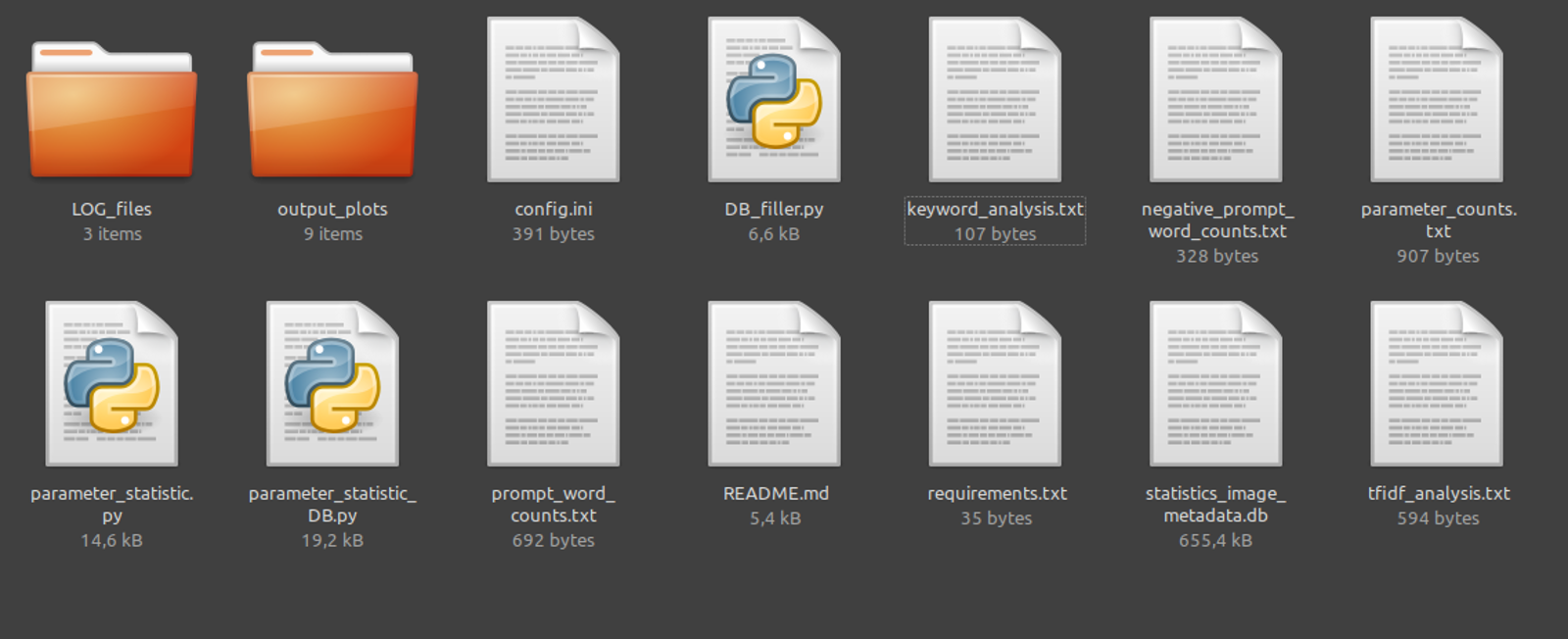ExifData Analytics
Unveiling the Secrets of your AI-Generated Images
In this world of AI-generated images, understanding the details is fascinating and crucial. As an AI image Creater, I found myself seeking a tool to analyze and interpret the EXIF metadata of my AI-generated images. Unable to find a solution, I created ExifData Analytics.
This project isn't just for me. It is for anyone who wants to know which parameters they use most frequently in their AI image generation adventure. Whether you're a artist, researcher, or a Cultured Art enthusiast, ExifData Analytics can help and is written in Python.
Key Features
Efficient Metadata Extraction: EDA can process a large volume of images quickly. In performance tests, it extracted and wrote data from 25,000 images to the database in just 1 minute and 38 seconds, using a 12 Core 24 Thread CPU with an SSD and 32GB of RAM.
Comprehensive Analysis: ExifData Analytics goes beyond simple extraction. It provides in-depth analysis of various parameters such as the AI model used, sampling methods, CFG scales, and more.
Intuitive Visualization: The tool generates easy-to-understand graphs and charts, making complex data accessible to users.
Flexible Database Management: Utilizing SQLite, the project offers robust data storage and retrieval capabilities, allowing for efficient handling of large datasets.
Customizable Keyword Analysis: Users can perform targeted analyses based on specific keywords of interest.
Real-World Applications
For Artists: Understand which parameters consistently produce your favorite results.
For Researchers: Track trends in AI image generation techniques over time.
For Developers: Gain insights to optimize AI models and generation processes.
For Enthusiasts: Explore the intricate details behind your favorite AI-generated artworks.
Technologies and Libraries
Biggest Part of the work inside of EDA
ExifTool: For efficient metadata extraction from Phil Harvey https://exiftool.org/
and several Python libraries:
SQLite: For database management
Pandas: For data manipulation and analysis
Matplotlib: For creating visualizations
Scikit-learn: For advanced text analysis (TF-IDF)
Challenges and considerations
One challenge was dealing with the different data in the EXIF metadata. for example, how words or parts of the metadata are separated from each other, using periods, commas, colons or what belongs together like the loras with their <> or if () are used to give something a higher value.
For the best results, the EXIF data of the images should be always in the same format. Different ways of separating words can make it harder to sort and analyse the data.
To deal with these issues, I've built in filters and normalizations as best I can.
Conclusion
ExifData Analytics can help anyone involved in AI-generated images. It makes it easier to understand AI image Metadata by providing efficient metadata extraction, analysis, intuitive visualization, and flexible database management. Whether you're an artist, researcher, developer, or just an cultured Art enthusiast, EDA has something valuable to offer.
A more in-depth how-to use and data examples you can find on
https://github.com/Confuzu/ExifData_Analytics






